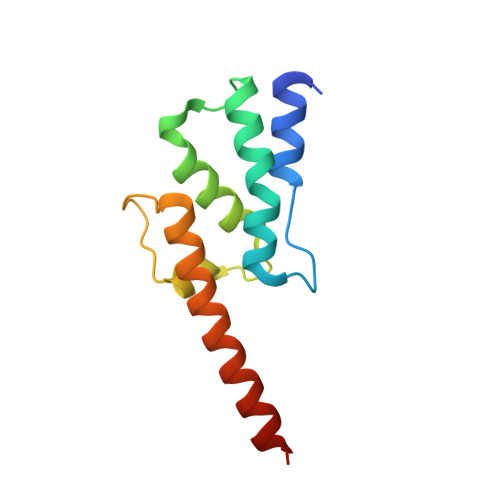Structural evidence that MOAP1 and PEG10 are derived from retrovirus/retrotransposon Gag proteins.
Zurowska, K., Alam, A., Ganser-Pornillos, B.K., Pornillos, O.(2022) Proteins 90: 309-313
- PubMed: 34357660
- DOI: https://doi.org/10.1002/prot.26204
- Primary Citation of Related Structures:
7LGA, 7LGC - PubMed Abstract:
The Gag proteins of retroviruses play an essential role in virus particle assembly by forming a protein shell or capsid and thus generating the virion compartment. A variety of human proteins have now been identified with structural similarity to one or more of the major Gag domains. These human proteins are thought to have been evolved or "domesticated" from ancient integrations due to retroviral infections or retrotransposons. Here, we report that X-ray crystal structures of stably folded domains of MOAP1 (modulator of apoptosis 1) and PEG10 (paternally expressed gene 10) are highly similar to the C-terminal capsid (CA) domains of cognate Gag proteins. The structures confirm classification of MOAP1 and PEG10 as domesticated Gags, and suggest that these proteins may have preserved some of the key interactions that facilitated assembly of their ancestral Gags into capsids.
Organizational Affiliation:
Department of Molecular Physiology and Biological Physics, University of Virginia, Charlottesville, Virginia, USA.














